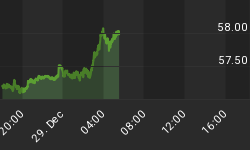As the last blistering blast of the summer season blows itself out both literally and metaphorically, heading into the long Labor Day weekend, the stock market is trying to do the same. Although propelled by weaker winds than impel Earl forward (equity volume was only 80% of Thursday's volume and only 49 days since the beginning of 2008 have seen less action than today...and eight of those were just last month), the surge is probably no less ephemeral. By the time we return on Tuesday, if not by tomorrow afternoon, we will be looking forward to the annual falling of the leaves, and the almost-as-typical falling of the market during this season.
Over the 35 calendar days (5 weeks) following September 4th over the decade from 2000-2009, the S&P fell an average of 4% (see Chart). But that obscures important differences: in five up years (2003, 2004, 2006, 2007, 2009), the market gained an average of 3.2%; in the five down years (2000, 2001, 2002, 2005, 2008), the market lost an average of 11%. If you are in a bear market, September can be a cruel month.

Equity market aggregate pattern over last 10 years.
But you know, perhaps we aren't in a recession, or heading for a double-dip, after all! Today's #1 top story on Bloomberg news, when I walked into the office this morning, was this: "U.S. Avoids Recession Relapse as Data Can't Get Much Worse."
Two obvious observations: First, this doesn't seem like unmitigated good news to me. Second, and more poignantly, if you think the data can't get much worse then you don't have any imagination at all. Heck, you don't have much memory at all since it was only two years ago that the data were much, much worse. The author's reasoning is that the sectors that led us into the recession are pretty much completely crushed, so they can't get worse. Sure, if you're a builder...yeah, you're right, it probably isn't going to get much worse than 50-year lows in Housing Starts. But if you are in manufacturing? Entertainment? Medicine? Hospitality? Agriculture? It can't get worse?
I'm not saying it will get worse; I'm just saying that this is a really odd time to be complacent about how bad it can get, especially if we think it can't get worse.
Today's data weren't too bad - Initial Claims at 472k won't set the world afire but it won't douse the blaze either - but the main event is tomorrow. Employment is expected to be -100k, with +42k coming in Private Payrolls (the rest is Census workers).
It makes eminent sense to strip out the Census effect if you are trying to track the economy's underlying trajectory, in just the same way that it makes sense to strip out food and energy from CPI if you're trying to figure out what is really happening with prices. But just as with changes in gasoline prices, stripping them out doesn't make them irrelevant. I am much more willing to ignore short-term gasoline wiggles, since what goes up usually comes down, than I am to blithely pronounce the irrelevance of the layoffs at Census. What goes down, in this case, will not soon go back up. While that doesn't mean the underlying trend is worse (although +42k per month from the private sector is a recession-type number), it matters for spending and confidence (just as a gasoline spike matters for other discretionary spending...but that case is a little less worrisome because the money is still being spent - it's just that more of it is going to gasoline sellers than to Hallmark).
Remember that the underlying story about the Employment figure for the last few months has been the sharp contraction in the labor force. The participation rate last month, at 64.6%, was the lowest since about 1985 (you can read my summary of last month's number here). If the participation rate rises tomorrow, that will be long-term good news and short-term bad news, since it would cause the Unemployment Rate to push back up (Consensus for tomorrow is a rise to 9.6% from 9.5%).
I have a lot of other tidbits on my notepad that I didn't get to this week; for example, sometime next week I will try to write about gold's "inflation duration". Tomorrow I will write something on the Employment report and the day's market action, but since I mentioned the weak equity market seasonal earlier I want to make sure I discuss the fixed-income market's seasonal pattern. Certain times of the year are much more regular for bonds than are other times, but the most consistent pattern for many years is this: starting in September, it is much better to be long bonds than to be short them. Over the 29 years from 1981-2009, the 10-year yield fell in the 60 days following August 31st 76% of the time (22/29), and the average of all changes - including when yields rose - was a decline of 23bps. Moreover, as you can see from the chart below the average 60-day change in yields remains strongly negative for a while. Over the last 29 years, the average 10y yield change in the 120 calendar days following August 31st has been a decline of about 40bps.

Bond seasonal pattern over last 29 years
I am well aware of the caveats that ought to be applied here. First, the last 29 years have been a bull market, so expecting a decline in yields in any given month hasn't been a bad bet (except perhaps in March and April); if we are in the midst of turning the secular trend around, this dependable pattern will surely eventually weaken. Moreover, we have just experienced a pretty rockin' August, and expecting a further 20-40bp rally when 10-year yields are already at 2.63% is courageous. I wouldn't be a bond buyer on the basis of these figures. But I'd be very careful about selling.
















